
की दुनिया में औद्योगिक चाकू, सही सामग्री का चयन आपके ऑपरेशन की दक्षता को बना या बिगाड़ सकता है। चाहे आप जमे हुए खाद्य पदार्थों को काट रहे हों, भारी-भरकम सामग्री काट रहे हों, या सटीक कट बना रहे हों, आपके ब्लेड की सामग्री सीधे उसके प्रदर्शन, स्थायित्व और रखरखाव की ज़रूरतों को प्रभावित करती है। यह लेख सबसे अधिक इस्तेमाल की जाने वाली सामग्री की पड़ताल करता है औद्योगिक चाकू सामग्री, उनके अद्वितीय गुण, और अपनी विशिष्ट आवश्यकताओं के लिए सर्वोत्तम का चयन कैसे करें।
1. आम औद्योगिक चाकू सामग्री
औद्योगिक चाकुओं में इस्तेमाल की जाने वाली सामग्री प्रदर्शन, स्थायित्व और विशिष्ट कार्यों के लिए उपयुक्तता में महत्वपूर्ण भूमिका निभाती है। नीचे, हम औद्योगिक चाकुओं में आमतौर पर इस्तेमाल की जाने वाली सामग्रियों के तकनीकी गुणों, उद्योग डेटा, अनुप्रयोगों और रखरखाव की ज़रूरतों के बारे में विस्तार से बात करेंगे।
| सामग्री | प्रमुख विशेषताऐं | अनुप्रयोग | रखरखाव युक्तियाँ |
| स्टेनलेस स्टील | संक्षारण प्रतिरोधी, टिकाऊ, स्वच्छ | खाद्य प्रसंस्करण, रसोई के चाकू | चमक बनाए रखने के लिए नियमित सफाई |
| कार्बन स्टील | उच्च तीक्ष्णता, पेटिना विकसित करता है | भारी-भरकम औद्योगिक कार्य | जंग से बचाव के लिए नियमित रूप से तेल लगाएं |
| कंपोजिट मटेरियल | हल्का वजन, भौतिक लाभों का संयोजन | सटीक कटाई, हल्के उपकरण | न्यूनतम रखरखाव की आवश्यकता |
| उच्च-क्रोमियम स्टील | पहनने-प्रतिरोधी, जंग-रोधी | खाद्य प्रसंस्करण, पैकेजिंग | उपयोग के बाद पूरी तरह से सफाई सुनिश्चित करें |
| एल्युमिनियम मिश्र धातु | हल्का, संक्षारण प्रतिरोधी, बहुमुखी | खाद्य प्रसंस्करण, नरम सामग्री काटना, पैकेजिंग | सूखी जगह पर रखें, नियमित रूप से साफ करें, नमी के संपर्क में आने से बचाएं |
| औजारों का स्टील | असाधारण कठोरता, पहनने का प्रतिरोध | भारी औद्योगिक कार्य | बेहतर प्रदर्शन के लिए हीट-ट्रीटमेंट |
| टंगस्टन कार्बाइड | अत्यंत कठोर, भंगुर | उच्च तनाव के तहत परिशुद्ध कटाई | प्रभाव से बचें; सावधानी से संभालें |
| चीनी मिट्टी | अति कठोर, अत्यधिक घिसाव प्रतिरोधी | नरम सामग्री सटीक कटौती | गिरने से बचें; प्रभाव पड़ने पर नाजुक |
| टाइटेनियम मिश्र धातु | हल्का, संक्षारण प्रतिरोधी | एयरोस्पेस, चिकित्सा और खाद्य उद्योग | न्यूनतम रखरखाव |
| नायलॉन और प्लास्टिक | हल्का, गैर-संक्षारक | गैर-धातु संदूषण-संवेदनशील कार्य | साफ करने में आसान, स्वच्छ |
1.1 स्टेनलेस स्टील
स्टेनलेस स्टील अपने संक्षारण प्रतिरोध के लिए प्रसिद्ध है, खासकर आर्द्र या रासायनिक रूप से प्रतिक्रियाशील वातावरण में। यह विशेषता इसे ऐसे उद्योगों के लिए आदर्श बनाती है जहाँ स्वच्छता एक चिंता का विषय है, जैसे खाद्य प्रसंस्करण और फार्मास्यूटिकल्स। औद्योगिक चाकुओं में सबसे अधिक इस्तेमाल किए जाने वाले स्टेनलेस स्टील ग्रेड 304, 316, 420 और 440 हैं।
तकनीकी जानकारी:
- जंग प्रतिरोध: 18% क्रोमियम और 8% निकल युक्त ग्रेड 304 स्टेनलेस स्टील, जंग और दाग के विरुद्ध उत्कृष्ट सुरक्षा प्रदान करता है, जबकि 316 ग्रेड क्लोराइड (जैसे समुद्री जल) के प्रति उन्नत प्रतिरोध प्रदान करता है।
- कठोरता: ग्रेड के आधार पर 45 से 55 HRc तक की रेंज होती है। उच्च ग्रेड में कठोरता और घिसाव प्रतिरोध अधिक होता है।
- तन्यता ताकत: ग्रेड 304 के लिए 520 एमपीए तक पहुंच सकता है।
अनुप्रयोग:
- खाद्य प्रसंस्करण: इसकी गैर-प्रतिक्रियाशील सतह के कारण इसका उपयोग आम तौर पर खाद्य पदार्थों को काटने और पैकेजिंग के लिए किया जाता है।
- चिकित्सा उपकरण: स्टेनलेस स्टील के चाकूओं का उपयोग शल्य चिकित्सा उपकरणों में किया जाता है जहां स्वच्छता सर्वोपरि होती है।
उद्योग डेटा:
एक अध्ययन में खाद्य सुरक्षा समाचार, खाद्य प्रसंस्करण वातावरण में स्टेनलेस स्टील के चाकुओं ने कार्बन स्टील के चाकुओं की तुलना में 30% अधिक लम्बा जीवनकाल दर्शाया।
रखरखाव सुझाव:
चमक और प्रदर्शन को बनाए रखने के लिए नियमित सफाई आवश्यक है। सतह के क्षरण से बचने के लिए हल्के सफाई एजेंटों का उपयोग करें, खासकर जब अम्लीय खाद्य पदार्थों के संपर्क में हों।
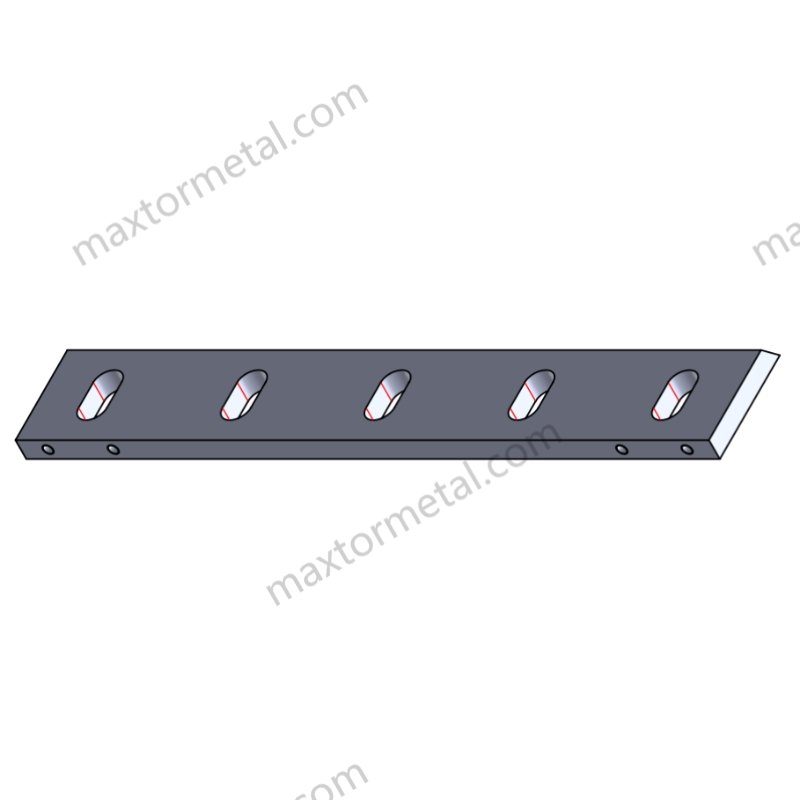
1.2 कार्बन स्टील
कार्बन स्टील, जो अपनी तीक्ष्णता और धार लगाने में आसानी के लिए जाना जाता है, अक्सर सटीकता की आवश्यकता वाले कार्यों के लिए पसंद किया जाता है। हालाँकि, इसका मुख्य नुकसान यह है कि इसमें जंग लगने की प्रवृत्ति होती है, जिसके लिए उचित रखरखाव की आवश्यकता होती है।
तकनीकी जानकारी:
- कठोरता: ऊष्मा उपचार के बाद कार्बन स्टील 60 HRc की कठोरता प्राप्त कर सकता है, जिससे यह कठोर सामग्रियों को काटने के लिए आदर्श बन जाता है।
- प्रतिरोध पहन: उच्च कार्बन सामग्री के कारण यह अधिक घिसती है, लेकिन नरम धातुओं की तुलना में इसकी धार अधिक समय तक बनी रहती है।
- पेटिना गठन: समय के साथ, कार्बन स्टील पर एक प्रकार की परत विकसित हो जाती है, जो स्टील की सुरक्षा करते हुए, इसके सौंदर्यात्मक आकर्षण को बढ़ा देती है।
अनुप्रयोग:
- भारी औद्योगिक कार्य: धातु की चादरें काटने, रबर की छंटाई करने या कठिन सामग्रियों के प्रसंस्करण जैसे कार्यों के लिए आदर्श।
- लकड़ी का काम और बढ़ईगीरी: अपनी तीखी धार के कारण यह लकड़ी काटने के औजारों में लोकप्रिय है।
रखरखाव सुझाव:
जंग को रोकने के लिए, उपयोग के बाद ब्लेड पर तेल लगाएँ। भारी-भरकम कामों के लिए, इष्टतम कटिंग प्रदर्शन बनाए रखने के लिए नियमित रूप से धार को तेज़ करें।
1.3 मिश्रित सामग्री
बेहतर गुण प्राप्त करने के लिए विभिन्न सामग्रियों को मिलाकर बनाई गई मिश्रित सामग्री, औद्योगिक चाकुओं में तेजी से आम होती जा रही है। वे हल्के वजन और उच्च-शक्ति विशेषताओं का संयोजन प्रदान करते हैं।
तकनीकी जानकारी:
- सामग्री की संरचना: कंपोजिट में अक्सर सिरेमिक, धातु और पॉलिमर का मिश्रण शामिल होता है।
- शक्ति-से-वजन अनुपात: धातुओं की तुलना में कम्पोजिट्स में शक्ति-से-भार अनुपात काफी अधिक होता है, जिससे वे एयरोस्पेस और ऑटोमोटिव अनुप्रयोगों में उपयोगी होते हैं।
- कठोरता: मिश्रित फॉर्मूलेशन के आधार पर भिन्न हो सकते हैं, लेकिन आम तौर पर वे 50-60 एचआरसी तक हो सकते हैं।
अनुप्रयोग:
- एयरोस्पेस और ऑटोमोटिव: ऑटोमोटिव विनिर्माण में प्रयुक्त कार्बन फाइबर और प्लास्टिक जैसी हल्की सामग्रियों को काटने के लिए आदर्श।
- परिशुद्धता काटना: अक्सर अत्यधिक भार के बिना उच्च शक्ति वाले पॉलिमर और कंपोजिट को काटने के लिए उपयोग किया जाता है।
रखरखाव सुझाव:
कंपोजिट को आमतौर पर न्यूनतम रखरखाव की आवश्यकता होती है, हालांकि कभी-कभी टूट-फूट या क्षति के लिए निरीक्षण की सिफारिश की जाती है।
1.4 उच्च-क्रोमियम स्टील
उच्च-क्रोमियम स्टील एक स्टील मिश्र धातु है जिसमें क्रोमियम का एक महत्वपूर्ण प्रतिशत होता है, आमतौर पर 10.5% से अधिक। यह मिश्र धातु विशेष रूप से घिसाव और जंग के प्रतिरोध के लिए जानी जाती है।
तकनीकी जानकारी:
- क्रोमियम सामग्री: क्रोमियम की मात्रा जितनी ज़्यादा होगी, स्टील उतना ही ज़्यादा जंग-रोधी होगा। उदाहरण के लिए, 420HC में 12% क्रोमियम होता है, जबकि 440C में 17% तक क्रोमियम होता है।
- कठोरता: उच्च-क्रोमियम स्टील 58-62 HRc तक कठोरता प्राप्त कर सकते हैं।
- प्रतिरोध पहन: यह घर्षण प्रतिरोध में मानक कार्बन स्टील से काफी बेहतर प्रदर्शन करता है।
अनुप्रयोग:
- खाद्य प्रसंस्करण: खाद्य पैकेजिंग के लिए काटने वाले उपकरणों में व्यापक रूप से उपयोग किया जाता है, जैसे कि फलों या मांस के लिए स्लाइसर।
- पैकेजिंग उद्योग: पैकेजिंग में इसका उपयोग इसकी बार-बार की कटाई और पैकेजिंग प्रक्रियाओं को बिना कुंद किए झेलने की क्षमता के कारण किया जाता है।
रखरखाव सुझाव:
सुनिश्चित करें कि उपयोग के बाद ब्लेड को अच्छी तरह से साफ किया जाए ताकि भोजन या रासायनिक अवशेषों से दीर्घकालिक क्षरण को रोका जा सके।
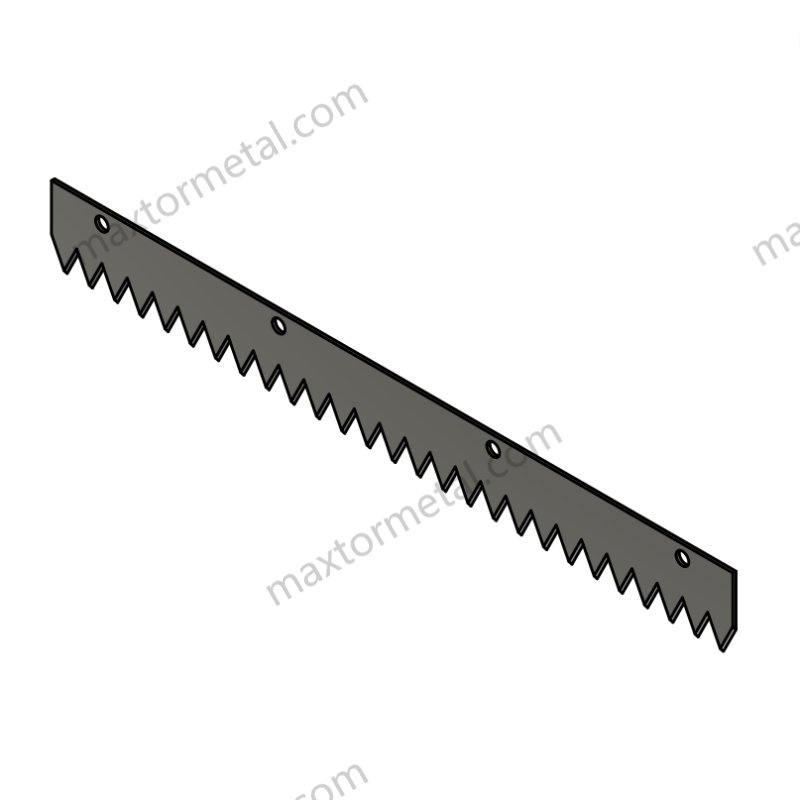
1.5 एल्युमिनियम मिश्र धातु
हल्के वजन, संक्षारण प्रतिरोध और बहुमुखी प्रतिभा के संयोजन के कारण एल्यूमीनियम मिश्र धातुओं का उपयोग विशेष औद्योगिक चाकूओं में तेजी से किया जा रहा है। हालांकि टूल स्टील या टंगस्टन कार्बाइड जैसी सामग्रियों की तरह कठोर नहीं, एल्यूमीनियम मिश्र धातु ऐसे लाभ प्रदान करते हैं जो उन्हें विशिष्ट काटने के अनुप्रयोगों के लिए उपयुक्त विकल्प बनाते हैं।
तकनीकी जानकारी:
- संघटन: एल्यूमीनियम मिश्रधातुओं को आमतौर पर उनकी मजबूती और स्थायित्व बढ़ाने के लिए मैग्नीशियम, सिलिकॉन या तांबे की थोड़ी मात्रा के साथ मिलाया जाता है।
- कठोरता: एल्युमिनियम मिश्र धातुओं की कठोरता भिन्न होती है, लेकिन आम तौर पर स्टील से कम होती है। एल्युमिनियम मिश्र धातु के चाकू की कठोरता आम तौर पर 40 और 50 HRc के बीच होती है।
- जंग प्रतिरोध: एल्यूमीनियम का एक प्रमुख लाभ यह है कि इसमें संक्षारण के प्रति प्रतिरोध क्षमता होती है, विशेष रूप से जब इसे एनोडाइज्ड किया जाता है या सुरक्षात्मक परत के साथ लेपित किया जाता है।
अनुप्रयोग:
- खाद्य प्रसंस्करण: एल्युमीनियम के चाकूओं का उपयोग आम तौर पर खाद्य प्रसंस्करण वातावरण में किया जाता है, विशेष रूप से ऐसे अनुप्रयोगों में जहां हल्के पदार्थ की आवश्यकता होती है जो भोजन को संदूषित नहीं करता।
- नरम सामग्री काटना: ये चाकू रबर, प्लास्टिक या कागज जैसी नरम सामग्रियों को काटने में उत्कृष्ट होते हैं, जहां कठोरता प्राथमिक आवश्यकता नहीं होती।
- हल्के उपकरण: अपने कम वजन के कारण, एल्यूमीनियम मिश्र धातु के चाकूओं को अक्सर उन कार्यों में पसंद किया जाता है जहां संभालना आसान होता है, जैसे कि कुछ प्रकार की पैकेजिंग में।
रखरखाव सुझाव:
एल्युमीनियम के चाकू को नमी से बचाने के लिए सूखी जगह पर रखना चाहिए, क्योंकि इससे जंग लग सकता है। अवशेषों को हटाने और जमाव को रोकने के लिए उन्हें नियमित रूप से पोंछना चाहिए, जिससे उनके काटने के प्रदर्शन पर असर पड़ सकता है।
1.6 औजारों का स्टील
टूल स्टील को खास तौर पर ऐसे औजारों के लिए बनाया जाता है जो उच्च स्तर के तनाव और घिसाव को झेलते हैं। यह एक बहुमुखी सामग्री है जिसे बेहतर प्रदर्शन के लिए गर्मी उपचारित किया जाता है।
तकनीकी जानकारी:
- उष्मा उपचार: ताप-उपचारित औजार स्टील असाधारण कठोरता (64 HRc तक) प्रदर्शित करते हैं तथा उच्च तापमान को सहन करने में सक्षम होते हैं।
- कठोरता: वे मजबूत और विरूपण के प्रति प्रतिरोधी होते हैं, जो भारी भार के तहत सामग्रियों को काटने के लिए उपयोग किए जाने पर महत्वपूर्ण होता है।
- प्रतिरोध पहन: टूल स्टील में कार्बाइड की मात्रा अधिक होती है, जिससे इसका घिसाव प्रतिरोध बेहतर होता है।
अनुप्रयोग:
- भारी औद्योगिक कार्य: इसके घिसाव के प्रति प्रतिरोध और उच्च तन्य शक्ति के कारण इसका उपयोग आमतौर पर विनिर्माण, खनन और निर्माण उपकरणों में किया जाता है।
- मोटर वाहन उद्योग: कठोर मिश्र धातुओं को काटने या फोर्जिंग कार्यों के लिए उपकरणों में उपयोग किया जाता है।
रखरखाव सुझाव:
प्रदर्शन को बनाए रखने के लिए टूल स्टील को गर्म करके गर्म किया जाना चाहिए। नियमित रूप से घिसाव और थकान के संकेतों की जाँच करें, और ज़रूरत पड़ने पर ब्लेड को फिर से टेम्पर करें।
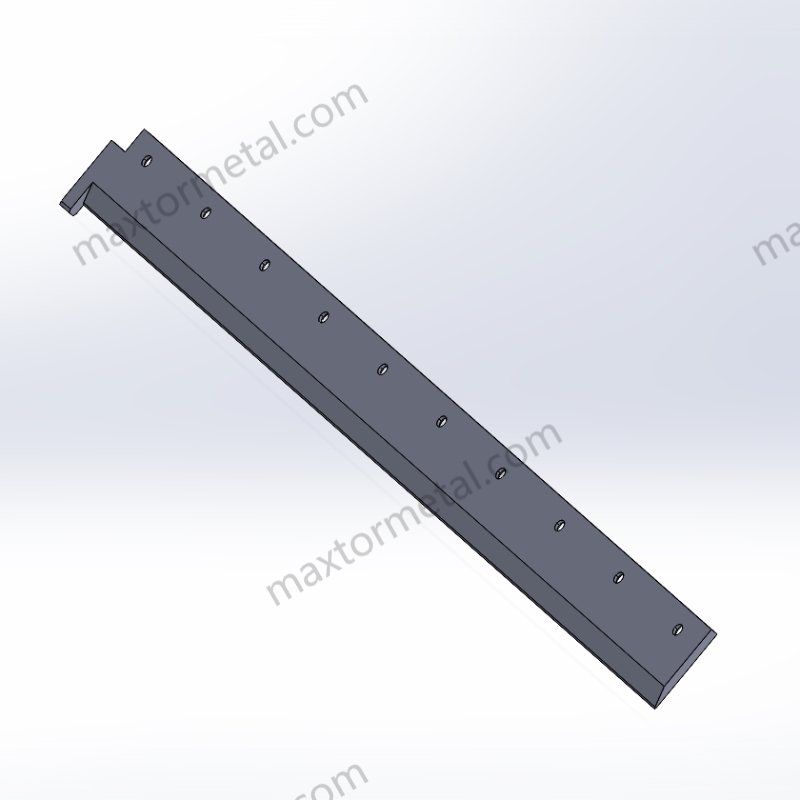
1.7 टंगस्टन कार्बाइड
टंगस्टन कार्बाइड सबसे कठोर सामग्रियों में से एक है और इसका उपयोग सटीक कार्यों के लिए काटने वाले औजारों में बड़े पैमाने पर किया जाता है। इसकी अत्यधिक कठोरता इसे उच्च-तनाव, उच्च-सटीकता वाले अनुप्रयोगों के लिए आदर्श बनाती है, लेकिन यह भंगुर भी है और इसे सावधानीपूर्वक संभालने की आवश्यकता होती है।
तकनीकी जानकारी:
- कठोरता: इसकी कठोरता 75 से 80 HRc तक होती है, जो इसे स्टील से लगभग तीन गुना कठोर बनाती है।
- भंगुरता: टंगस्टन कार्बाइड की भंगुरता के कारण यह आघात या अचानक तनाव के कारण टूट सकता है, इसलिए इसे विशेष प्रकार से संभालने की आवश्यकता होती है।
- घनत्व: 15 ग्राम/सेमी³, जो अन्य सामग्रियों की तुलना में काफी अधिक है, जो काटने के दौरान इसकी स्थिरता में योगदान देता है।
अनुप्रयोग:
- परिशुद्धता काटना: इसका उपयोग उन उद्योगों में किया जाता है जिनमें उच्च परिशुद्धता कटौती की आवश्यकता होती है, जैसे इलेक्ट्रॉनिक्स या एयरोस्पेस घटकों का विनिर्माण।
- खनन और ड्रिलिंग: टंगस्टन कार्बाइड अपनी उत्कृष्ट कठोरता और अत्यधिक घर्षण को झेलने की क्षमता के कारण ड्रिलिंग उपकरणों के लिए पसंदीदा सामग्री है।
रखरखाव सुझाव:
टंगस्टन कार्बाइड को टूटने से बचाने के लिए सावधानीपूर्वक संभालना ज़रूरी है, खासकर तब जब यह प्रभाव बलों के संपर्क में आता है। ब्लेड के जीवनकाल को बढ़ाने के लिए उचित भंडारण और हैंडलिंग महत्वपूर्ण है।
1.8 सिरेमिक सामग्री
अवलोकन और विशेषताएं
सिरेमिक सामग्री, विशेष रूप से zirconia और सिलिकॉन नाइट्राइड, उनके लिए जाने जाते हैं अत्यंत उच्च कठोरता (आमतौर पर मोहस पैमाने पर 8.5 से 9 के आसपास), बेहतर पहनने का प्रतिरोध, और chemically inert properties. Ceramic knives maintain their sharp edge longer than most metal blades, making them ideal for applications requiring high precision. Their hardness is around 3 times that of stainless steel, which makes them an excellent choice for cutting softer materials such as fruits, vegetables, and certain plastics.
अनुप्रयोग
Ceramic knives are most commonly used in food processing, particularly for cutting soft materials where precision is important. They are also widely used in pharmaceutical और laboratory applications, where the risk of contamination from metallic particles must be avoided. Furthermore, they are utilized in the electronics industry for clean cutting of soft rubber and plastic parts.
- खाद्य प्रसंस्करण: Cutting delicate foods like tomatoes, fish, and cheeses where minimal oxidation or crushing is desired.
- Pharmaceuticals: Cutting or slicing sensitive drugs or packaging materials where contamination from metal is a concern.
Technical Insights and Industry Data
Ceramic knives have a high resistance to corrosion (even better than stainless steel), making them highly suitable for use in acidic environments (like cutting citrus fruits) or in the food processing industry where hygiene is crucial. Ceramic blades are typically non-reactive and will not alter the taste or color of food.
However, while the hardness of ceramic blades is a major advantage, they are brittle, and thus, shock resistance is one of their major drawbacks. Research shows that ceramics, due to their rigid and non-ductile structure, can fracture under heavy impact or stress. Studies also reveal that ceramic blades, while initially maintaining sharpness for longer periods, tend to suffer from catastrophic failure (i.e., cracking or breaking) when mishandled.
रखरखाव
- Avoid dropping or subjecting ceramic knives to high impacts.
- While they do not rust, they must be carefully stored to prevent damage.
- Regular cleaning with warm, soapy water ensures hygiene, but abrasive cleaners should be avoided as they can scratch the surface.
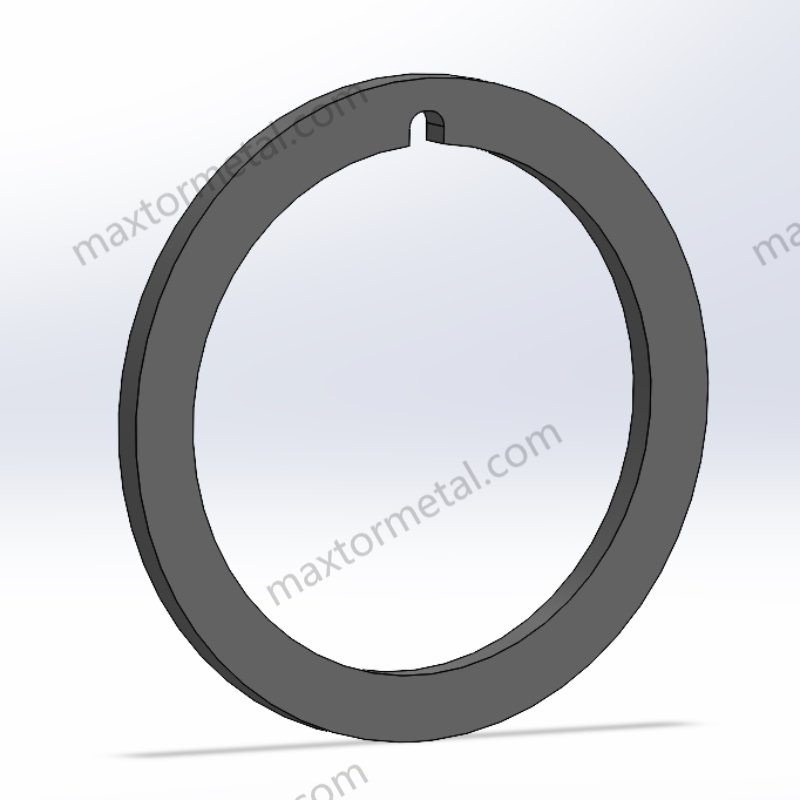
1.9 Titanium Alloys
अवलोकन और विशेषताएं
Titanium alloys, particularly Grade 5 (Ti-6Al-4V), are composed of 90% titanium along with 6% aluminum और 4% vanadium. These alloys are known for their excellent strength-to-weight ratio, being lightweight yet highly durable और corrosion-resistant. The material is naturally resistant to rust and corrosion, and has a density of about 4.43 g/cm³, significantly lighter than steel (7.8 g/cm³).
अनुप्रयोग
Titanium alloys are widely used in industries where weight, strength, और resistance to harsh environments are critical. They are commonly employed in aerospace, medical implants, and high-end industrial cutting tools.
- एयरोस्पेस: Used for precision cutting in aircraft components due to their high strength and low weight.
- चिकित्सा: Titanium knives are used in surgeries, particularly in orthopedics, due to their non-reactive properties and bio-compatibility.
- Food Industry: Titanium blades are used for cutting delicate food products, particularly in environments where high levels of hygiene and non-reactivity are required.
Technical Insights and Industry Data
Titanium alloys excel in extreme temperature resistance (up to 600° सेल्सियस), making them suitable for high-temperature cutting applications. Studies show that titanium is capable of withstanding severe environmental conditions, including exposure to sea water और chlorine, which would normally degrade conventional metal blades.
Additionally, titanium blades are extremely durable, with प्रतिरोध पहन comparable to high-grade stainless steels. Research conducted by the International Titanium Association shows that titanium alloys have a higher tensile strength (approximately 900 MPa) than many other materials used in industrial knives.
रखरखाव
- Routine cleaning with mild detergent and a soft cloth.
- Regular inspections to ensure that there are no corrosion points.
- For cutting food, ensure that the knife is properly sanitized after each use to prevent microbial growth.
- Avoid exposure to extreme impacts or abrasions to maintain blade integrity.
1.10 Nylon and Plastics
अवलोकन और विशेषताएं
Nylon and plastic materials used for industrial knives typically fall under the thermoplastic category, such as polypropylene (PP), polyethylene (PE), और nylon (PA). These materials are lightweight, have high chemical resistance, and are ideal for environments where metal contamination must be avoided. They have low friction coefficients, which allows for smooth cutting action on softer materials.
अनुप्रयोग
Nylon and plastic knives are frequently used in industries where the safety of the product being cut is of utmost importance, especially in applications that involve cutting food or pharmaceuticals.
- Food Industry: Plastic knives are often used in meat processing, vegetable cutting, or in food preparation facilities to avoid contamination from metal particles.
- Pharmaceuticals: For cutting or handling pharmaceutical packaging and tablets, non-metallic knives are essential for maintaining the integrity of the product.
- पैकेजिंग: Plastic knives are also used for cutting or shaping packaging materials like soft plastics and films.
Technical Insights and Industry Data
Plastic knives have significant chemical resistance, particularly against oils, acids, and bases. Polyethylene (PE) and polypropylene (PP) have tensile strengths of around 20-30 MPa, which are sufficient for light-duty tasks. Industry standards often choose nylon for tasks that require moderate strength and durability, with nylon 6/6 being a common choice due to its high abrasion resistance और tensile strength of up to 90 MPa.
However, their cutting edge durability is lower than that of metal knives, and they are best suited for light to medium-duty applications where flexibility and contamination resistance are priorities over cutting efficiency.
रखरखाव
- Washing with warm water and mild detergent is typically sufficient to keep these knives clean.
- They should be stored in dry environments to prevent the absorption of moisture, which could weaken the material.
- Regular visual inspections should be carried out to ensure no cracks or damage to the blade surface, especially in food handling environments.
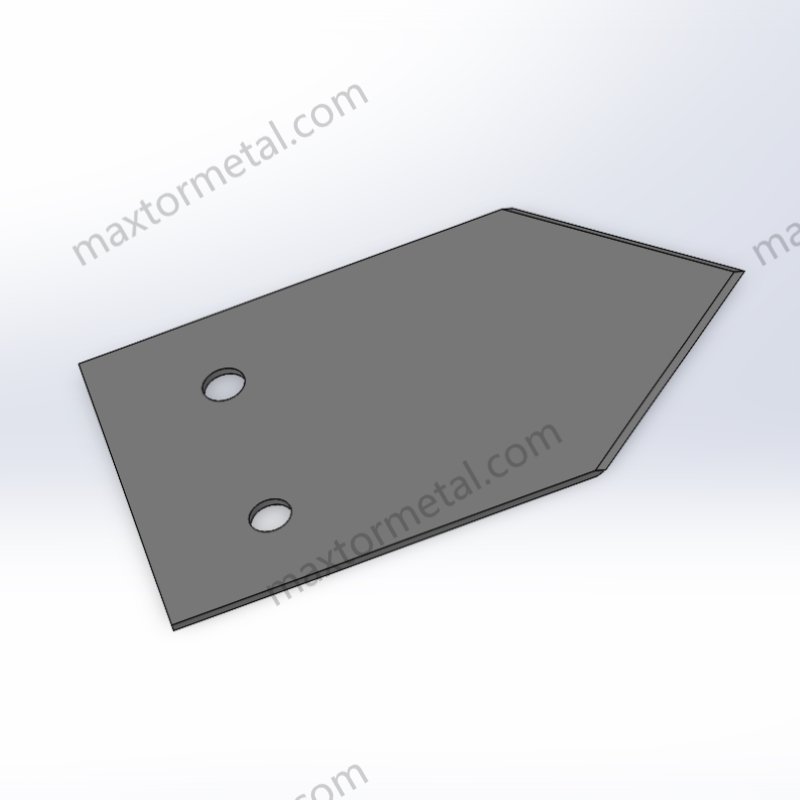
2. सही चाकू सामग्री चुनने में महत्वपूर्ण कारक
Choosing the appropriate material for industrial knives depends on several factors that can significantly impact cutting performance, cost-effectiveness, and overall durability. Here’s a more detailed analysis of what to consider:
2.1 Cutting Requirements
Different materials offer specific advantages depending on the cutting task at hand. For example:
- Sharpness and Edge Retention: Carbon steel and tungsten carbide excel in providing sharp, durable edges, making them ideal for tasks like cutting metals or thick materials.
- जंग प्रतिरोध: Stainless steel and aluminum alloys are essential in applications where rust and corrosion could compromise the quality of work, such as in the food and pharmaceutical industries.
- परिशुद्धता काटना: Ceramic and composite materials are often used in highly precise tasks, where a razor-sharp edge is needed without compromising on strength.
Industry Recommendation:
- Heavy-duty Applications: Tool steels and high-chromium steels are often recommended for tasks involving tough materials like steel or composites. These materials retain their sharpness for longer periods under heavy use.
- Light-duty or Sensitive Applications: Materials like aluminum and nylon are ideal when the cutting process requires less force and the material being cut is softer or sensitive.
2.2 Environmental Conditions
The environment in which industrial knives are used plays a crucial role in material selection. Factors like temperature, humidity, and exposure to chemicals can influence performance:
- तापमान प्रतिरोध: Tool steels and tungsten carbide are ideal for high-temperature environments, where maintaining hardness and strength is critical. Tungsten carbide, in particular, maintains its hardness even at temperatures over 500°C.
- Moisture and Chemical Exposure: Stainless steel and aluminum alloys are highly resistant to rust and corrosion caused by exposure to moisture and chemicals, making them perfect for food processing, marine environments, and chemical manufacturing.
2.3 Maintenance Requirements
Maintenance is often a decisive factor in the overall lifespan and performance of industrial knives. Certain materials require more attention than others to maintain their effectiveness:
- स्टेनलेस स्टील: Needs to be cleaned regularly but generally requires minimal maintenance compared to other materials. A regular check for corrosion or staining is enough to preserve performance.
- कार्बन स्टील: Needs regular oiling to prevent rust. Periodic sharpening is essential to maintain the sharpness and avoid unnecessary wear.
- टंगस्टन कार्बाइड: Although extremely durable, these knives must be handled with care to avoid chipping or breaking, and should be checked regularly for any cracks.

3. ब्लेड की स्थायित्व बढ़ाने की तकनीकें
Durability and performance enhancement are crucial in extending the service life of industrial knives. Here, we explore some advanced techniques for improving the durability and functionality of industrial knives.
3.1 Heat Treatment
Heat treatment is one of the most effective ways to enhance the properties of industrial knives. It involves heating the material to a high temperature and then rapidly cooling it (quenching) to increase hardness and wear resistance. This is particularly beneficial for tool steels, carbon steels, and high-chromium steels.
- शमन: This process increases hardness by rapidly cooling the material, ensuring that the knife retains its sharpness over time.
- तड़का: After quenching, tempering is used to reduce brittleness and improve toughness, making the knife more resistant to impact and fatigue.
3.2 Surface Treatment and Coatings
Coating industrial knives with specialized materials can significantly improve their wear resistance, corrosion resistance, and overall lifespan. Some popular coatings include:
- Titanium Nitride (TiN) Coating: TiN is a commonly used coating for industrial knives due to its high hardness (around 2,200 HV) and resistance to corrosion. It reduces friction, which leads to longer cutting times and less frequent sharpening.
- Chromium Nitride (CrN) Coating: Another common coating that offers excellent wear and corrosion resistance, particularly in aggressive cutting environments.
3.3 Knife Design and Geometry
The geometry of a knife blade is critical to its performance, especially in terms of its cutting efficiency and durability. Key factors to consider include:
- ब्लेड कोण: The sharper the blade angle, the finer the cut it will produce, but this can reduce durability. A balance must be struck between sharpness and longevity.
- Reinforced Areas: Certain areas of the blade, such as the spine and base, should be reinforced to prevent damage under heavy usage.
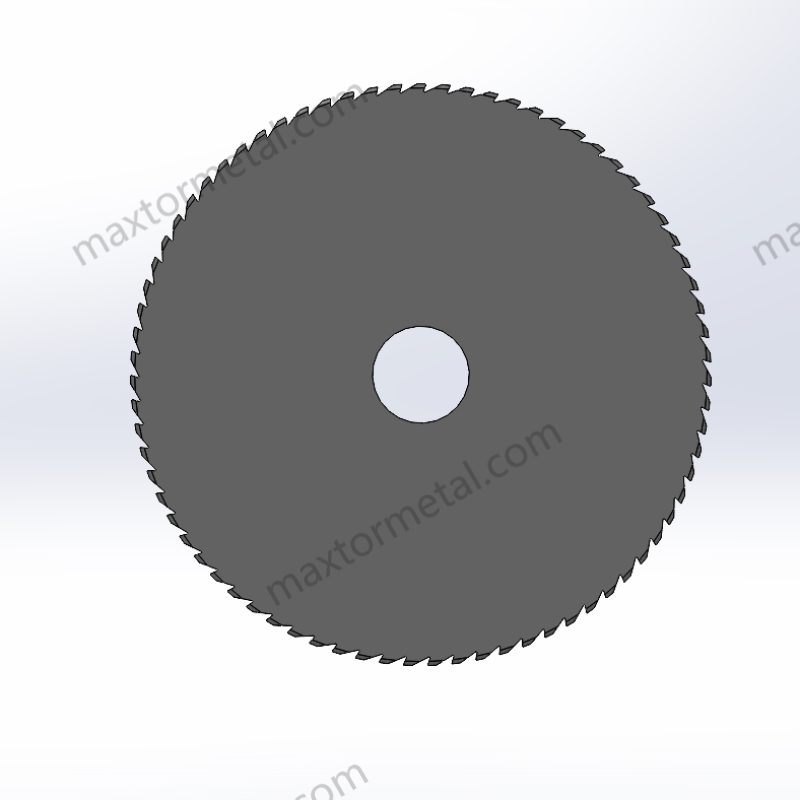
4. नानजिंग Metal: Your Partner for Custom Knife Solutions
With 18 years of expertise, Nanjing Metal specializes in designing and manufacturing industrial knives tailored to your needs. Our team delivers solutions for a wide range of industries, including food processing, packaging, and heavy machinery.
हमें क्यों चुनें?
- अनुभव: Over 18 years of industry knowledge.
- अनुकूलन: Tailored blade designs to meet your specific requirements.
- Quality: Superior materials and advanced manufacturing techniques.
आज ही हमसे संपर्क करें for a free consultation or to discuss your custom knife requirements.
5। उपसंहार
Choosing the right material is crucial to maximizing the performance and lifespan of industrial knives. From stainless steel to tungsten carbide, each material has its strengths and limitations. By understanding your cutting needs, environmental conditions, and maintenance requirements, you can select the best blade for your application.
Let नानजिंग Metal be your trusted partner in crafting high-quality, सीustom industrial knives. Get in touch today and elevate your cutting performance!



2 प्रतिक्रियाएं